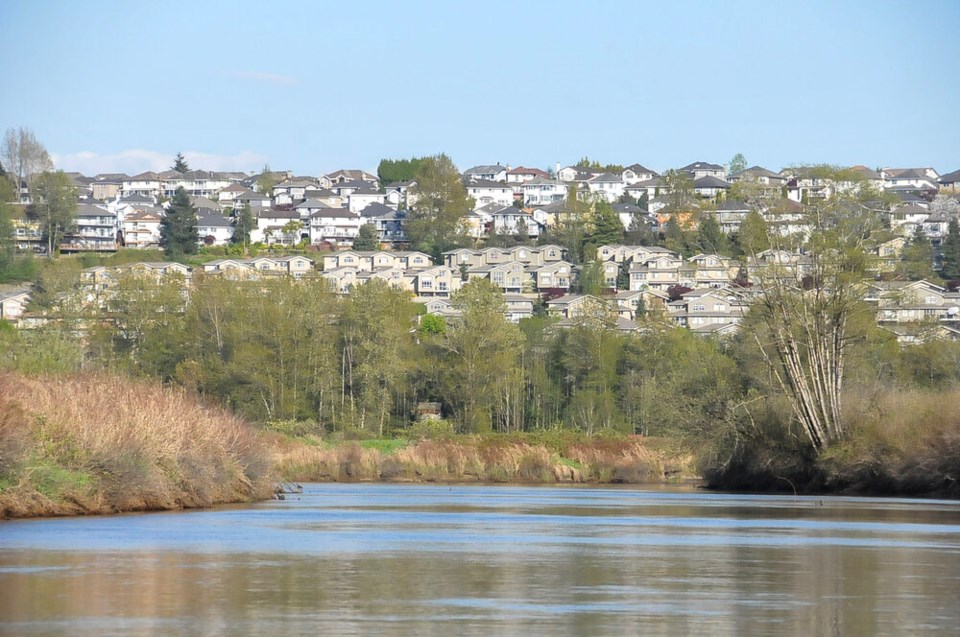The B.C. government has kickstarted a plan it says will protect the province’s freshwater from climate change — step one, ask British Columbians to weigh in.
In a discussion paper released Tuesday, the Ministry of the Environment and Climate Change Strategy outlined 10 goals under a new Watershed Security Strategy and Fund.
It includes everything from improving aquatic ecosystems and watershed governance to working with First Nations to manage the fate of B.C.’s freshwater.
“We’ve all witnessed the increasingly dramatic impacts of climate change,” said Minister George Heyman, pointing to last year’s floods, wildfire and extreme heat.
“Given the urgent need to prepare for future climate events, I’m inviting British Columbians to join in the conversation…”
A watershed — also known as a drainage or catch basin — includes all the land that funnels rainfall and snowmelt through gullies, creeks, streams and rivers. Once that water has passed down mountain slopes, through forests and into valley bottoms, it eventually makes its way to a final terrestrial resting place — often a reservoir, aquifer or ocean. As many have learned in grade school science projects, water then evaporates into the atmosphere and starts the cycle all over again.
But damage any part of that system and the knock-on effects can be felt across the many animal species and human settlements that stand in between the sky and sea.
In the coming decades, scientists project fossil fuel emissions will continue to alter the global climate system so that B.C. will see patterns of increased summer drought and more intense swings in extreme weather.
Oliver Brandes, an economist and lawyer leading the University of Victoria’s Project on Ecological Governance, said the wild temperature extremes, wildfires and flooding of 2021 caught many scientists off guard — not because it was happening, but because it was happening so soon. In a year dominated by one natural disaster after another, the role of water cannot be ignored, he said.
“As we’ve all learned, the climate crisis is indeed a water crisis,” Brandes said at the virtual press conference. “This year, we’ve gone from contamination to drought to fire to ferocious floods. Too much, too little and everything in between.”
British Columbia, which holds roughly a quarter of all the fresh water in Canada, relies on watersheds to provide nearly all its electricity, provide drinking water to more than 5.1 million residents, and quench its food crops.
But according to a 2019 provincial Preliminary Strategic Climate Risk Assessment, by 2050, seasonal water shortages are expected to be “almost certain”; long-term water shortages, on the other hand, were projected to be among the top four climate risks facing B.C. by mid-century.
Without healthy watersheds, droughts endure, wildfires intensify, and the survival of keystone species, like salmon, are put at risk. What comes next is, said Brandes: “Soil is lost. Food cannot grow. Local economies falter, and conflict mounts.”
All levels of government, First Nations, non-profits and individuals are already working across B.C. to find solutions. In March 2021, the B.C. government announced it would put $27 million toward a Healthy Watersheds Initiative to help monitor and restore some of the province’s rivers.
Among the 70 largely small-scale projects, environmentalists have successfully teamed up with First Nations to pay farmers and ranchers to protect waterways around their land. But scaling up the project across the province requires more money, according to David Zehnder, a cattle rancher outside of Invermere, B.C., and head of Farmland Advantage.
“If we have the funding, this thing can scale immediately,” he told Glacier Media last year after devastating flooding hit several rural communities across southern B.C.
“We now have a rigorous model that’s ready for prime-time.”
It’s not clear how much money will be allocated to the B.C. government’s Watershed Security Fund, which will, in turn, fund the Watershed Security Strategy still under development. A ministry spokesperson said the province is “exploring a range of options,” including partnering with the federal government.
Anyone interested in adding their voice to the conversation can provide feedback in an online questionnaire between Jan. 25 and March 18, 2022, by 4 p.m.
According to the ministry’s web page, the idea is to provoke discussion. The questionnaire offers individuals and organizations a chance to ask questions and point out any concerns, ideas or solutions the government should know about.
Participants will be asked a series of questions, including where money is most needed, what local resources are missing, how managing water better can advance Indigenous reconciliation, and where there are gaps in how people understand local watersheds.
The online feedback form also asks people to offer their opinion on effective water conservation and restoration measures, and to rank the following watershed values in order of importance: water for cultural or spiritual purposes; habitat for aquatic species; water for recreational purposes; water for agriculture; water for drinking; wild food harvesting; and water for business or industrial purposes.
Written submissions can also be forwarded to the ministry’s Water Protection and Sustainability Branch.
According to Heyman, the information will be used to develop the ministry’s plan, eventually presented to the government by the end of 2022.
As for Brandes, he says in his 20 years of working on water, he hasn’t come across any other place in the world that has built an effective watershed security strategy.
If successful, he says, B.C. will be on the “cutting edge.”



.png;w=120;h=80;mode=crop)

